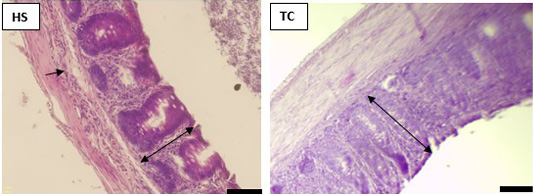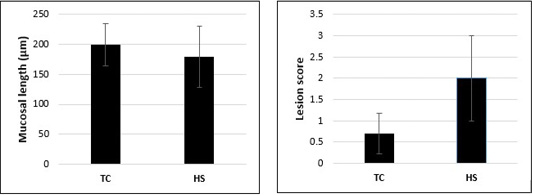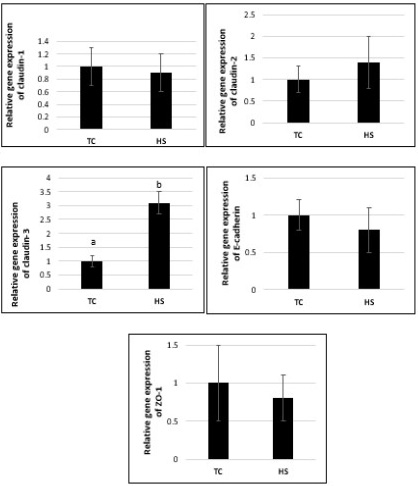Effects of Heat Stress on Histomorphology and Tight Junction Genes Expression in the Cecum of Broiler Chickens
Effects of Heat Stress on Histomorphology and Tight Junction Genes Expression in the Cecum of Broiler Chickens
Ho Thi Dung, Nguyen Van Chao, Nguyen Thi Hoa, Le Dinh Phung, Tran Thi Na, Nguyen Thi Thuy, Tran Nguyen Thao, Pham Hoang Son Hung*
The histological observations in ceca of chickens shown by HE stains. HE-stained specimens were observed under light microscopy. The arrow indicates inflammatory cells infiltrate to mucosa and submucosa. The double-headed arrows indicate the mucosal length. Bar scale is 50 µm.
Mucosal length and lesion score in ceca of broiler chickens exposed with heat stress. The mucosal thickness and lesion score was evaluated under light microscopy in the TC (thermoneutral control) and HS (heat stress). All data are represented as the mean ± SE.
mRNA expression levels of tight junction genes in the ceca of chickens. Amplifications were performed on twenty-five independent samples with triplicate reactions carried out for each sample. The relative mRNA level was calculated using the 2−ΔΔCt method. All data are represented as the mean ± SE. Different letters in the upper of columns represent significantly different (p < 0.05) by unpaired t-test.









